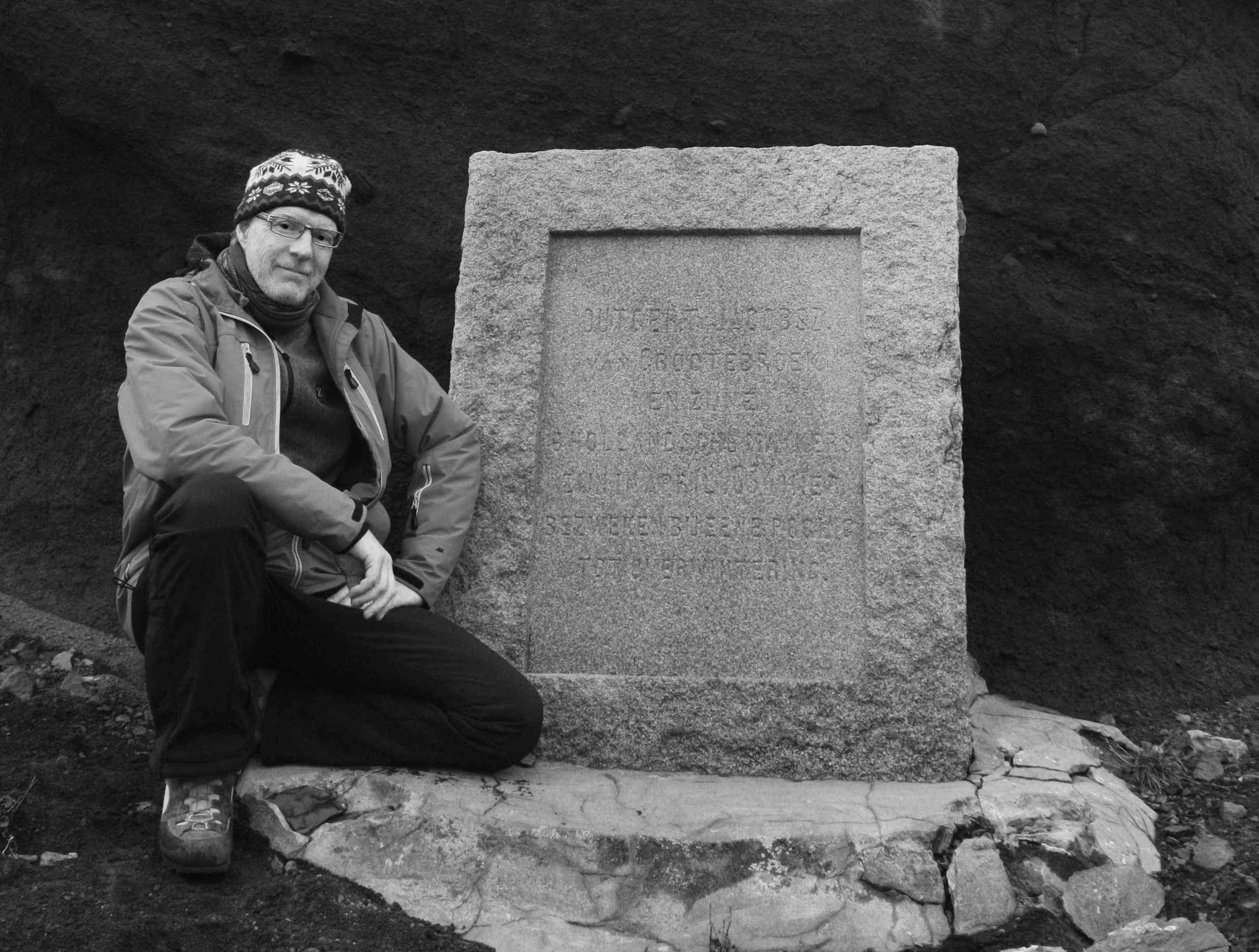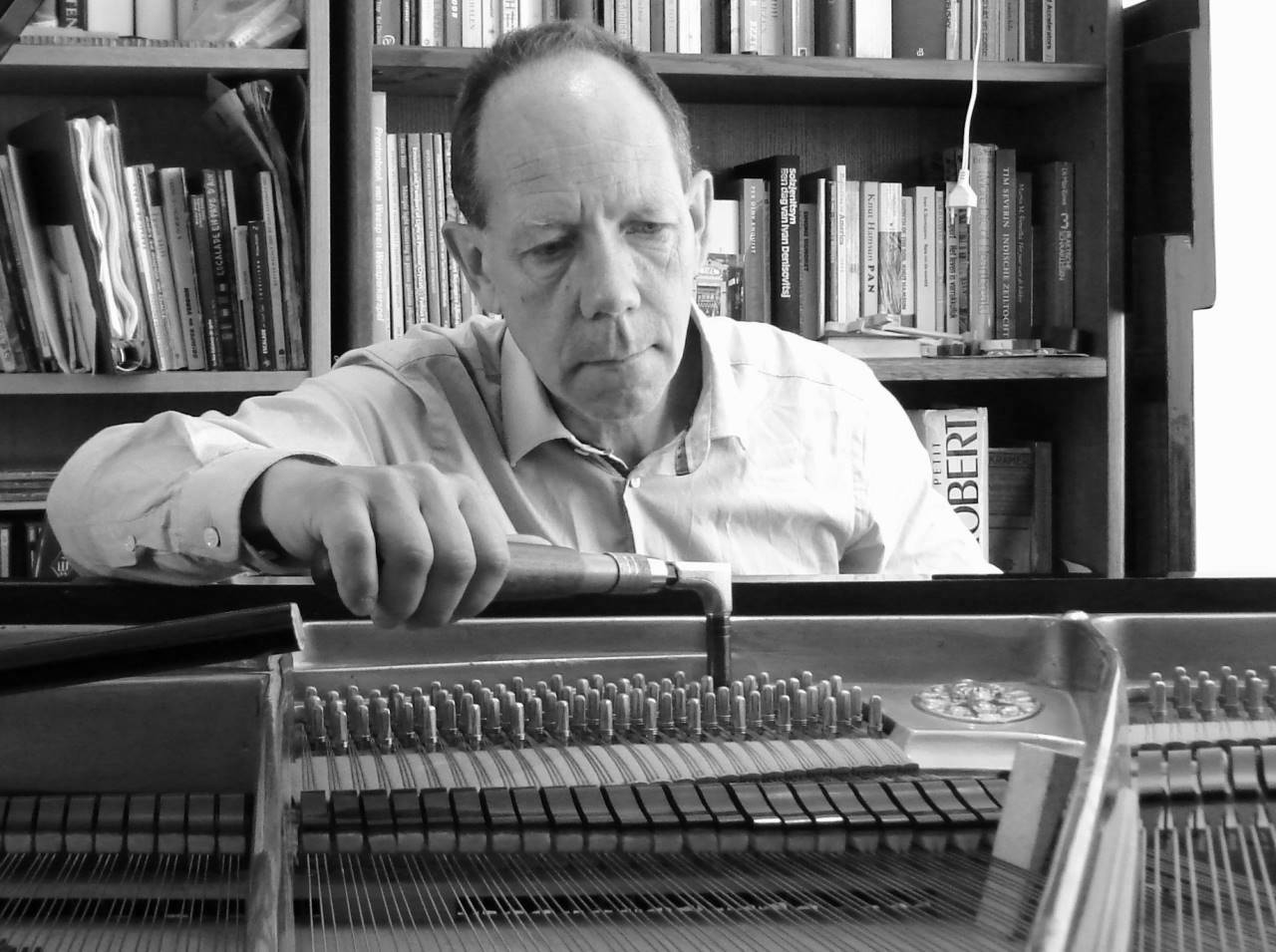Nerd Nite Greatest Hits – Five years of Talks and Beers
Behold it’s Nerd Nite Amsterdam’s birthday! We’ve been nerding it up in Amsterdam for five years now so we decided to celebrate big! How? By doing what we do best: an entire evening filled with nerds taking the stage. Over the years we’ve had more than 50 nerds to impress, inspire and surprise us; so we thought we’d bring back six of our all-time favourites for a blast-from-the-past greatest-hits edition of Nerd Nite.
There will be parallel sessions, quizzes, drinks, surprise elements, groovy tunes and, well, more fellow nerds than you can shake a stick at. Be there and be square!
Writing history in stone on an Arctic volcanic island by Erik Verheul

The enigmatic island of Jan Mayen, a volcanic island in the Arctic Ocean, has a rich but nearly forgotten history. On the island, an old and heavily eroded memorial stone tells the story of 7 Dutchmen who died there in an attempt to winter over. In 2014 the Navy ship RNLN Zeeland set out for an expedition to Jan Mayen island, one of their goals being to preserve the cultural heritage there. On board were a large team of scientists, a small team of mountaineers, and a single stone carver. Erik Verheul, the man behind the mission and our fearless leader for this Nerd Nite talk, will take us through remarkable story of the history behind and renovation of the memorial stone: old granite, modern ceramic materials, and granular structures.
Bio: Erik works from 9 to 5 as a civil servant for the government (something with telecommunications). He lives in an average house, has a wife and 2 kids, and drives a Volvo. He dreamed of crossing the Sahara desert, parachute jumping, climbing snow-capped volcanoes, scuba diving, and watching starry nights from a beach in Madagascar. And he did all that, but actually thinks his current job is more fun.
Mathematics of musical harmony. Why does a piano have twelve keys? by Tom Hijmans

On pianos the octave is divided into twelve equal tone steps. Why twelve? Is this just convention, led by our cultural penchant towards dividing things into twelve parts? Think of the dozen, the number inches in a foot, the number of pence in a shilling in old English money, and, of course, the number of hours in a half day. In the case of the piano the twelve key octave is there because of mathematical necessity. That is, if we want to be able to play harmonic music on our instrument. No prior math knowledge required, just a good set of ears!
Bio: Tom Hijmans is an experimental physicist of the UvA. He is also a piano tuner and runs a piano repair workshop from his home, races laser sailing boats and climbs rocks. His favorite animals are the moth and the peregrine falcon. Do ask him why!
It is rocket science, from Scud to Unha-3 by Ralph Savelsberg

Developed in Nazi Germany, the V2 was the world’s first ballistic missile. It spawned a Cold War arms race between the world’s superpowers, but also lead to the Scud missile, which gained notoriety in the 1991 Gulf War. Under the leadership of its Bond-villain dictator, Kim Jong-un, North Korea is building ever larger missiles by cleverly applying technology little different from that used by the V2 and Scud. It may be less than a decade away from developing an intercontinental ballistic missile capable of reaching the United States.
Bio: Ralph Savelsberg is a physicist who, after obtaining a PhD and performing wind tunnel experiments in the UK for several years, joined the Netherlands Defence Academy in 2010. There, he teaches officers of the Dutch military about weapons systems and writes computer simulations of ballistic missiles. In his spare time he builds scale models using LEGO.
Please don’t touch? A history of controversial monuments by Eveline van Rijswijk

While biking through the city, do you ever pay attention to the countless statues and monuments around you? Probably not — many of them are just being peed on by dogs. But then there is a small category of statues that trigger huge debates and are even vandalized. As a historian, Eveline van Rijswijk is fascinated by what happens when history makes up its mind and a statue becomes a “monumental mistake”. Come and listen to the story of what happened to Stalin’s boots after a revolutionary crowd sawed his 8-meter-tall bronze statue at its knees and get to know where you can still take a selfie with a statue of Lenin.
Bio: Walk down a street with Eveline, and you’ll soon find out she is a historian. When she’s not telling you everything about an obscure monument or old building you just encountered, she’s probably already looking for the next one. During daytime she trains professors to give cool lectures about science. Now it’s her turn!
The truth is out there… it’s called math! by Michiel Renger

Think the Matrix is just a movie? Think again! Reality is a fraud and Plato was right all along… Science, in a way, attempts to reveal the truth behind reality. But what do we even mean by ‘reality’; and is there even such a thing as the truth? …and if it exists, how do we find it? These philosophical questions take us all the way back to Plato, the man that started it all – Mathematics plays an important role in his philosophy. So what is truth in the mathematical world, and how does it relate to reality?
Bio: Michiel Renger studied mathematics in Delft, and after some years of non-math-related jobs, he realised that he really should be doing math. Currently he works as a researcher at the Weierstraß Institute in Berlin, studying limits of an infinite number of particles. If he doesn’t do math, he likes to play dance music on his saxophone and didgeridoo.
The amazing and crazy inventions of Nikola Tesla. Including a demo of artificial lightning by Kjeld Eikema

Nikola Tesla (1856-1943) was a true genius and one of the most brilliant inventors of all time. Everyone is using his inventions often without knowing it! He invented things like AC electric power, (high-voltage) transformers, radio, power generators, fluorescent lamps, and much more. Some of his ideas where really ahead of his time, inspiring other people to come up with conspiracy theories and bizarre ideas about UFO’s and energy out of nothing. In the talk I will give you an idea about his amazing and crazy inventions, and what Tesla was like as a person (quite weird!). Of course, we will finish with a live demonstration of his most famous invention, the “Tesla coil”, producing sparks with insanely high voltage.
Bio: Kjeld is a professor of experimental physics at the VU University, with a particular liking for things and devices that tend to be dangerous. After his first experiments at age 6, connecting a 1.5V light bulb to the mains, many other experiments followed at home with high voltage, lasers, robots, rockets, and explosives. That was still possible back then, and great fun. Besides hobbies like playing the piano (sort of) he currently likes to test fundamental physics theories using precise (and of course dangerous!) lasers.
Details:
Friday April 15th
Doors open: 20:00
First talks: 20:30
Felix Meritis Zuilenzaal & Shaffyzaal
Tickets: €15,- (includes 1 drink)
Tickets can be found here
Facebook event page (don’t forget to click ‘Going’ and invite your friends, yeah yeah this is what our society has become)
